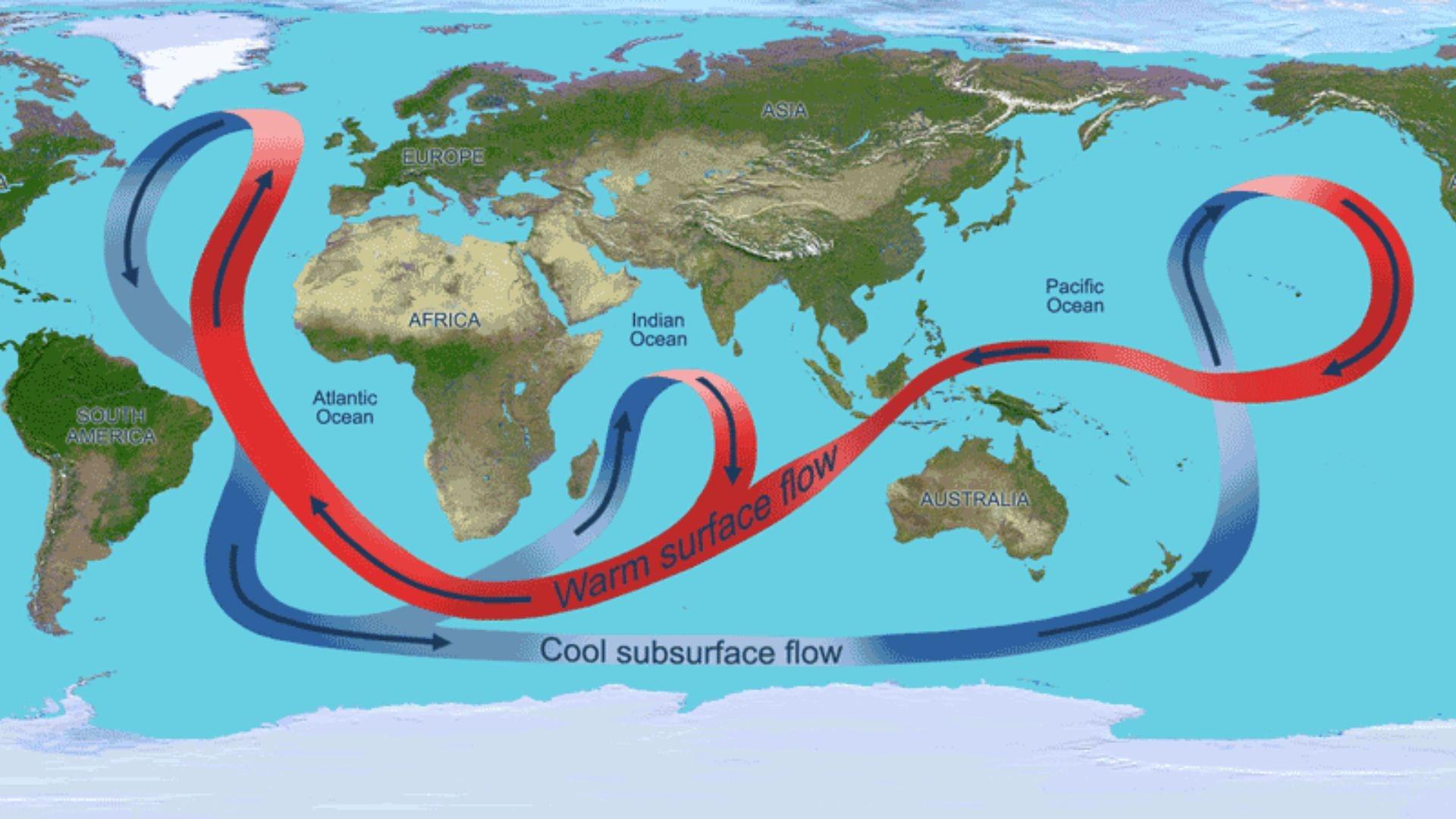Ocean Current on the NC Coast Is in Crisis


The Gulf Stream, a strong ocean current that moves warm water from the Gulf of Mexico up the East Coast, flows between 12 to 50 miles off the North Carolina coast. It helps fuel the state’s vibrant seafood industry, and it plays an important role in weather systems, not only in the state but along the Atlantic.
The Gulf Stream is powered by what’s known as the Atlantic Meridional Overturning Current (AMOC), one of the world’s largest ocean circulation systems. Imagine a giant whirlpool stretching across the entire Atlantic Ocean.
A 2023 study in the journal Nature suggests the entire AMOC system could collapse by the middle of the century, or even as soon as 2025.
Scientists say it’s due to climate change and that it would be catastrophic for weather throughout the world.
You can think of the AMOC as a giant conveyor belt of ocean water.
It’s a system of ocean currents that circulates water within the Atlantic Ocean, bringing warm water from the tropics northward along the East Coast of the United States. As the current travels away from the U.S. into the North Atlantic, around Greenland, the water cools, becomes dense and sinks deep beneath the surface. The Gulf Stream is part of this system.
The water then swings back southward and travels all the way to the Southern Hemisphere, submerged, where it makes its way to the Antarctic as part of a global system of ocean currents.
This system plays a vital role in climate because it redistributes heat and regulates global weather patterns.
At least, that’s how it’s supposed to work.

Scientists have warned the AMOC system is weakening and growing more unstable. This is because climate change is speeding the melting of Arctic ice, creating huge freshwater pulses from Greenland, and spawning heavier rain events.
It all combines to make northern water fresher and less salty. That means the water isn’t as dense, so it isn’t sinking, and the current is slowing.
Previous studies predicted the AMOC would weaken but not collapse before the turn of the century, but the new report looked at a much broader data set, and its conclusions are much more alarming.
The AMOC has been closely monitored only since 2004. In the new study, researchers looked at a 150-year period between 1870 and 2020. That’s significant because it shows how currents behaved before human-caused climate change.
“We needed to go back in time,” Peter Ditlevsen told CNN. He’s a professor of climate physics at the University of Copenhagen and one of the authors of the report.
“This part of the ocean is warmed by the water transported north from the tropics by the AMOC, “so if it cools, it’s because the AMOC is weakening.”
Researchers then subtracted the impacts of human-caused global warming on the water temperature to understand how the currents were changing.
The result: a prediction that the system could collapse as early as 2025 and no later than 2095. The most likely point of collapse is between 2039 and 2070.
“It’s really scary. This is not something you would lightly put into papers,” said Ditlevsen. “We’re very confident that this is a robust result.”
First, a slower Gulf Stream could speed up the rate of sea-level rise because it would alter the sea-level topography. Satellite measurements show the ocean is about one meter higher farther out at sea than along the coast. A slower Gulf Stream would raise the sea level at the coast.
The slowing Gulf Stream could also threaten North Carolina’s fishing industry. As the current races along the continental shelf, it brings nutrient rich colder water up from the deep ocean. That feeds the creatures lower on the food chain, which in turn feeds larger and larger sea life.
This is the latest study looking at the possible collapse of the Gulf Stream. Sci NC spoke with Ruoying He, the director of NC State’s Ocean Observing and Modeling Group and a professor in the Department of Marine, Earth and Atmospheric Sciences, about the same concerns in a story in 2022.
“Our location along the Gulf Stream creates a biological hot spot for sea life, which has help[ed] create a vibrant fishery,” said He. “If the nutrients are gone, the fish may have to travel farther to find food and not be so easily caught right off the coast.”
“We’re already seeing an increase in the number and severity of hurricanes, which is another result of a warming ocean, so the problem is real,” He added. “The implications of a dramatic change in ocean circulation just keep getting worse.”
Watch Be Smart to learn more about ocean currents, streaming now.